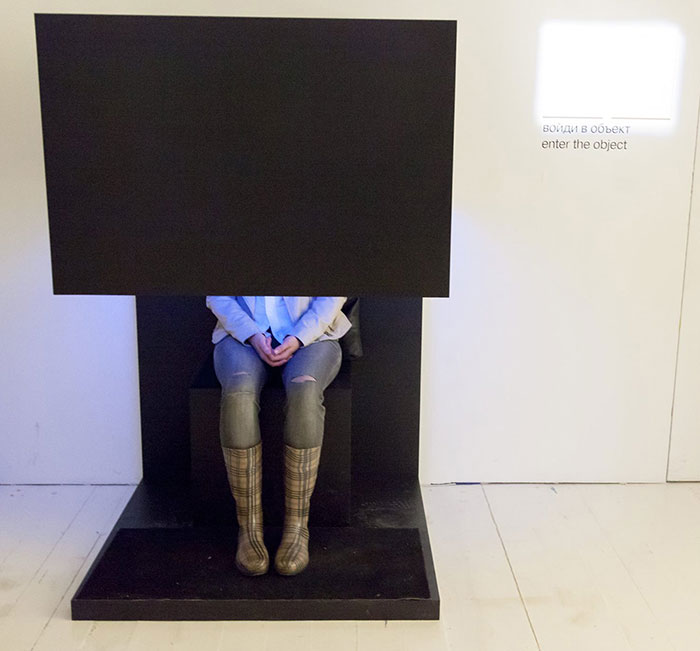Brain Scanner
Interactive video installation
Programing : Anton Sachs
|
This interactive object features a cabin equipped with a computer, a monitor and a sound system. It was shown for the first time at the iconic exhibition “Believe” (2006, WINZAVOD Centre for Contemporary Art, curator Oleg Kulik). The installation closely resembles an apparatus for studying the human body and its abnormalities from a scientific laboratory or a hospital. In essence it represents a symbolic “brain scanner” which allows a reading and visualization of images that reside in the unconscious. The viewer is invited to take a seat, make him or herself comfortable and follow the instructions of a mechanical voice. The main task that the voice assigns to the viewer, who has ventured into the exploration of his or her own brain, is to concentrate on the inner self as much as possible. A short while after the human subject completes the task the computer shows the result, which is projected in the form of a short film (lasting little more than a minute) on a screen. The film fully reflects the subject’s desires, both overt and hidden. The computer memory contains more than 100 clips compiled from the most popular and iconic films of the last 25 years. Their variety allows the machine to give a precise characteristic of the covert desires and the inner state of the human subject at a given moment. It may happen that one could gain insight into oneself and one’s true phobias, fears and twists and turns of the unconscious, as it happened with Porcupine – a character in Andrei Tarkovsky’s film “Stalker”. It should be recalled here that the mysterious Zone (the strange place which is also perhaps the film’s protagonist) can fulfill, ruthlessly and incalculably, only the most cherished desire of those who enter it. The reward for Porcupine the “stalker” (essentially a guide for the Zone), after having successfully overcome the hurdles on the way to his goal — primarily the resuscitation of his brother whose death in the Zone was Porcupine’s fault — was to gain untold wealth. Having seen his genuine desire fulfilled he hung himself being unable to endure the shame. Therefore, this project by AD is a rather perilous game in which anyone who is not afraid of oneself is invited to play. In parallel the artist, in her own words, is trying to understand, “How is our psyche formed? What myths affect it? Can we have an influence on what is shown on TV screens and in cinemas? How do television and cinema influence our perception of the world?” However, these are rhetorical question. The answers are obvious.Elena Selina
|

Photo E. Gurko
